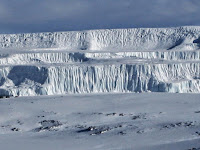
Tarangire National Park is the sixth
largest national park in Tanzania after Ruaha,
Serengeti, Mikumi, Katavi and Mkomazi. The national park
is located in Manyara Region. The name of the
park originates from the Tarangire river that crosses through the park, being
the only source of water for wild animals during dry seasons. During the dry
season thousands of animals migrate to the Tarangire National Park from Manyara
National Park.
It lies a little distance to the south east of Lake
Manyara and covers an area of approximately 2,850 square
kilometers(1,100 square miles.) The landscape and vegetation is incredibly
diverse with a mix that is not found anywhere else in the northern safari
circuit. The hilly landscape is dotted with vast numbers of Baobab trees, dense
bush and high grasses
The park is famous for its huge number of elephants,
baobab trees and tree climbing lions. Visitors
to the park can expect to see any number of resident zebra and wildebeest
in addition to the less common animals. Other common animals include waterbuck,
giraffe, and olive baboons.
Home to more than 550 species, the park is a refuge
for bird enthusiasts who can expect so see dozens of species even in the dry
season. The swamps are the focus of the largest selection of breeding birds
anywhere in the world. Yellow-collared Lovebirds are a
common bird sighting in the trees along the Tarangire River.
The park is also famous for the termite
mounds that dot the landscape. Those that have been abandoned are often
seen to be home to dwarf mongoose
What to do
Guided walking safaris.
Day trips to Maasai and Barabaig villages, as well as to the hundreds of
ancient rock paintings in the vicinity of Kolo on the Dodoma Road.
 The Amboni Caves are the most extensive
limestone caves in East Africa. They are located 8 km north of Tanga City
in Tanzania off the Tanga-Mombasa road. The caves were formed about 150 million
years ago during the Jurassic age. It covers an area of 234 km². According
to researchers the area was under water some 20 million years ago. There are
altogether ten caves but only one is used for guided tours.
The Amboni Caves are the most extensive
limestone caves in East Africa. They are located 8 km north of Tanga City
in Tanzania off the Tanga-Mombasa road. The caves were formed about 150 million
years ago during the Jurassic age. It covers an area of 234 km². According
to researchers the area was under water some 20 million years ago. There are
altogether ten caves but only one is used for guided tours. 












